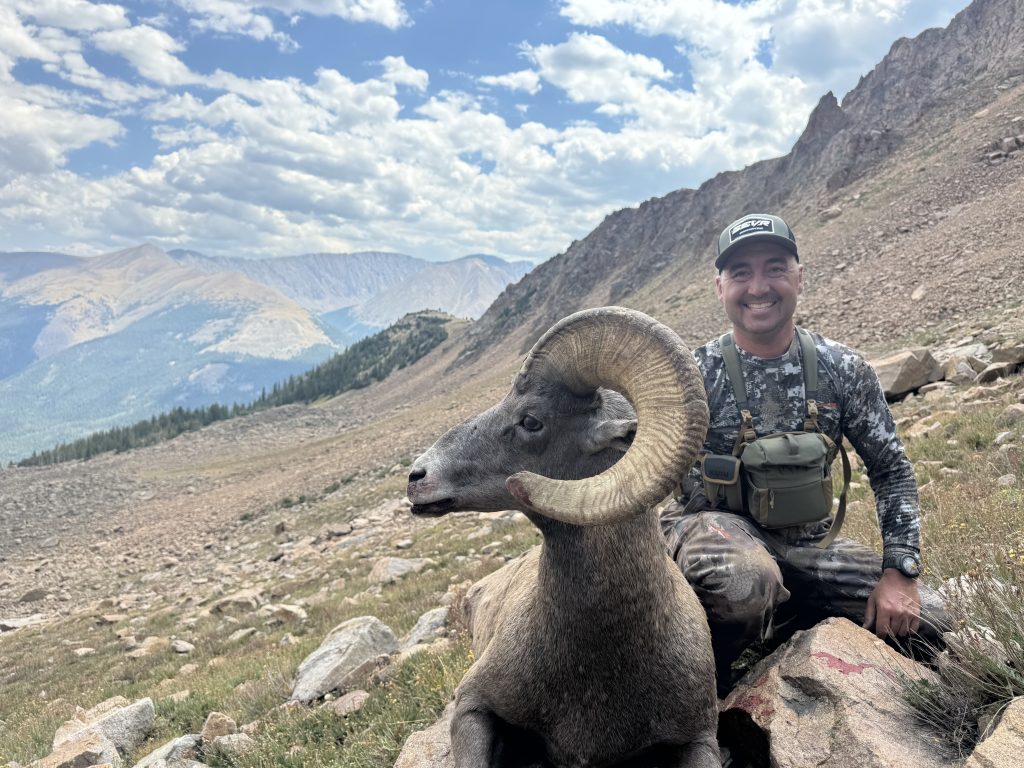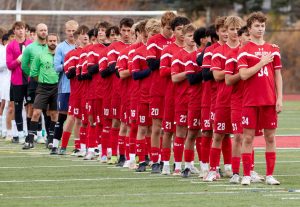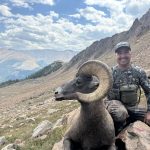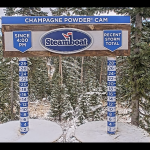Routt County deputy fulfills lifelong dream with bighorn sheep hunt

Robert Caughey/Courtesy Photo
For Routt County Sheriff’s Deputy Robert Caughey, a big game trophy has never been measured in inches or pounds. Instead, it’s defined by the terrain and the journey through it, along with the challenges and lessons learned along the way. It’s also a testament to family, friends and the community of hunters who lift up and support one another.
When Caughey drew his once-in-a-lifetime archery bighorn sheep tag in spring 2025, it marked the culmination of decades of dreams and anticipation that began in childhood. He hunted blacktails on the California coast, mule deer and elk in the Rockies, sitka black tails on Kodiak Island and Coues deer in the deserts of Arizona.
But this tag was different.
It carried a powerful drive supported by childhood dreams and stories passed around a campfire. Caughey had fostered similar dreams within his own children as well, especially on early mornings where they would spend time chasing something wild together.
It had taken him only seven weighted preference points, and he knew this was likely the only chance that he would have in his life to fulfill his childhood dream. The bighorn sheep license was also a deviation from what he described as a string of bad luck when it came to drawing big game tags, a fact which often placed him at the end of jokes regarding getting limited licenses.
“I was one of three people who drew that tag,” he said. “It hit me like a freight train. I pulled to the side of the highway and just sat there processing what it meant.”
After he was done sharing his elation with his family and friends, the preparation began.
Caughey, who had never used a paid guide in his life, decided not to hunt with an outfitter. Instead, he dedicated himself to the realization of a lifelong dream with only the assistance of family, friends and others who were willing to share information about the area he was selected to hunt.
“It was almost poetic,” Caughey said. “I wanted the experience to be mine and I wanted to earn it with my own effort.”
He spent the months before the hunt shooting countless arrows daily across steep hillsides near his home in a test of angles, stamina and patience. As the snow melted, he began packing into the high country to scout the famed bighorn sheep near Georgetown as he studied their habits, mapped the terrain and learned the mountains ridge by ridge and gully by gully.
The in-person scouting proved to be a task so immense that even decades of hunting couldn’t prepare him for it.
“There’s this misconception that you can just hike to the top of a mountain in a few hours,” Caughey said. “But six or seven hours later, you realize every step could be your last. The terrain takes everything out of you.”
By late July, he had several rams marked in his notes, each one a strong contender within the pre-established baselines he had set for his lifetime hunt. One in particular stood out, with its dark body and horns that were heavy at the bases and carrying the notorious curve that defines the species. He referred to him as “the bully,” as he was a dominant ram who pushed younger ones aside in the high ridges near Bard Peak.
But even the best-laid plans don’t come without an occasional curveball, as a blown transmission momentarily drew his attention away from scouting and training.
Two days before the season opened, Caughey and longtime friend Richard Padilla packed into sheep country. They found a patch of level ground near a snowmelt stream, set up camp and tried to sleep through the night as coyotes howled across the basin. A leaky air mattress left Caughey on the frozen ground until he made the tedious trip back to his vehicle for a spare.
The next morning, their glassing revealed only ewes, with the rams nowhere to be seen.
“I’d been scouting that area for months,” he said. “Every time I went in, I’d see 30 or more sheep. And now, nothing. I just kept telling Rich, ‘Let’s stay. I think they’ll come back.'”
They did.
On opening day, the pair began climbing toward a high peak that overlooked two drainages. The ascent, which topped out near the 14,000-foot mark, was brutal. Loose rock slipped beneath their boots as they crawled over boulders the size of trucks. Then, near the summit, Caughey froze as he saw fresh tracks, beds and general sheep signs everywhere.
Moments later, through his binoculars, he spotted movement. Seven rams, climbing the canyon below.
“They were 2,000 yards out, but I knew right away,” he said. “This was them.”
Caughey dropped 2,000 feet down the mountain and began circling into position. The wind was perfect, blowing steadily and in his face. Cresting a rise, he froze again. There, standing in the V-shaped cut of a massive boulder just 60 yards ahead, was the same block-bodied dominant ram that he’d watched all summer.
“I couldn’t move,” he said. “I stood there for 10 minutes with a fly crawling on my face.”
When the ram finally turned broadside, staring out over the canyon toward Georgetown, Caughey rose to full draw. His 60-yard pin settled behind the shoulder, and after he touched the trigger on his release, the arrow disappeared exactly where he’d aimed.
“The fletching vanished, and he reared like a horse,” Caughey said. “Then he was gone over the edge.”
Moments later, as he scanned the boulder field below, he saw the breathtaking sight of the realization of his childhood dream — his ram lying expired.
“I started yelling for Rich,” he said. “We had the ram. I’d done it with a bow at 14,000 feet on my own.”
The ram, which was 8½ years old, carried a 31-inch curl with thick, dark horns and the Roman-nosed look of a sheep that had proven himself to be the monarch of the mountain. Caughey’s shot had passed clean through. As he knelt beside the animal, feelings of pride, gratitude and disbelief overtook him.
“It was surreal,” he said. “How often does your first stalk on the first day come together like that? It felt like the end of a lifetime of work, but also the beginning of understanding what it all meant.”
Caughey and his friend packed the ram out through the night, and he met his wife and daughters on a forest road where they’d driven to meet him. His family celebrated the moment, as years of dreaming and months of dedication combined into one perfect day.
The experience, he said, changed the way he sees the mountains. It also deepened his desire to give back. Today, his name is listed with Colorado Parks and Wildlife as a contact for future tag holders in Unit S32, and he plans to support other hunters and CPW just as they supported him. He also plans to attend the annual bighorn sheep and goat meet-and-greet in Denver to help others prepare for their own once-in-a-lifetime hunt and to share the realized dream of a young boy on a California ranch.
“I’ve always tried to remember where I came from,” he said. “When I was a kid in California, we hunted on ranches that belonged to family friends. I didn’t realize until they were gone how much those opportunities shaped me. Now, when new hunters call or kids need help, I open my door and tell them, ‘Come on, we’ll go find you one.'”
For Caughey, the trophy was his ram combined with the solitude of the high country, which was in turn supported by the love of his family and friends. It was captured in the work it took to get there, and celebrated with the humble recognition that some dreams, once realized, belong not just to the hunter but to every person who helped them along the way.

Support Local Journalism

Support Local Journalism
Readers around Steamboat and Routt County make the Steamboat Pilot & Today’s work possible. Your financial contribution supports our efforts to deliver quality, locally relevant journalism.
Now more than ever, your support is critical to help us keep our community informed about the evolving coronavirus pandemic and the impact it is having locally. Every contribution, however large or small, will make a difference.
Each donation will be used exclusively for the development and creation of increased news coverage.









